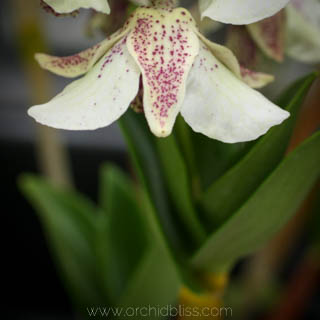
orchid anatomy and terminology
While learning about orchids are you coming across strange words like monopodial and sympodial? Then this article is for you. I don’t want there to be any confusion when it comes to orchid care and hope you find this glossary of orchid anatomy and terminology helpful.
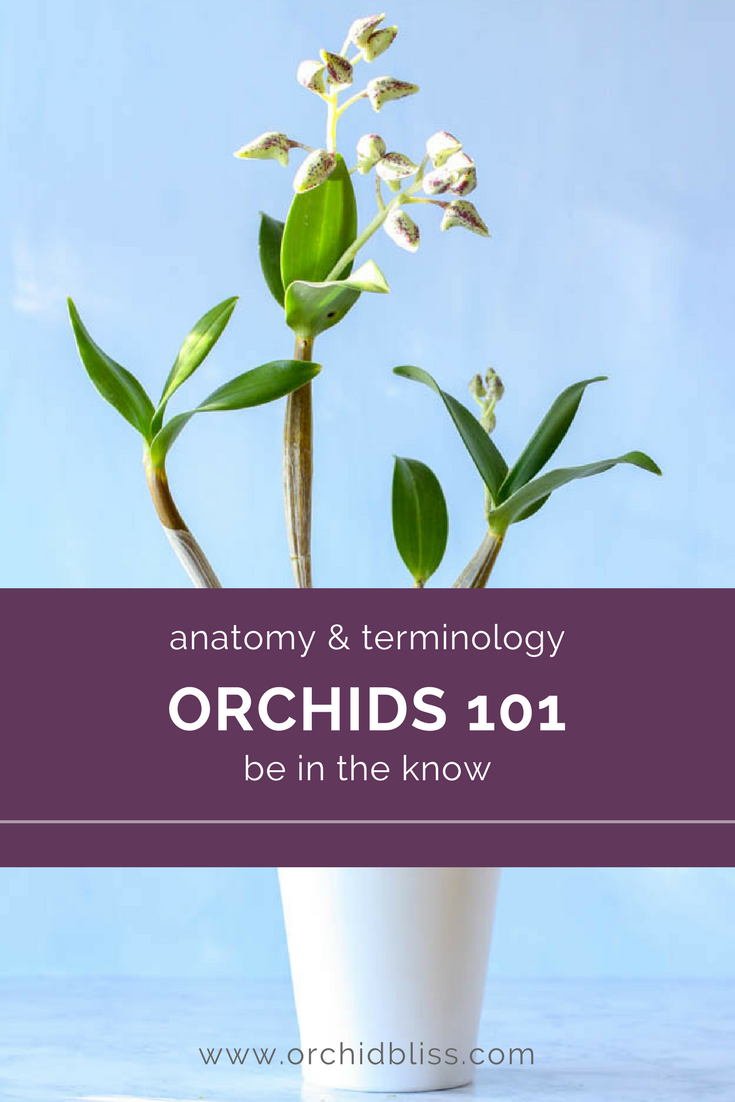
Some of the links on this page may be affiliate links. Click here to learn more.
Orchid Anatomy
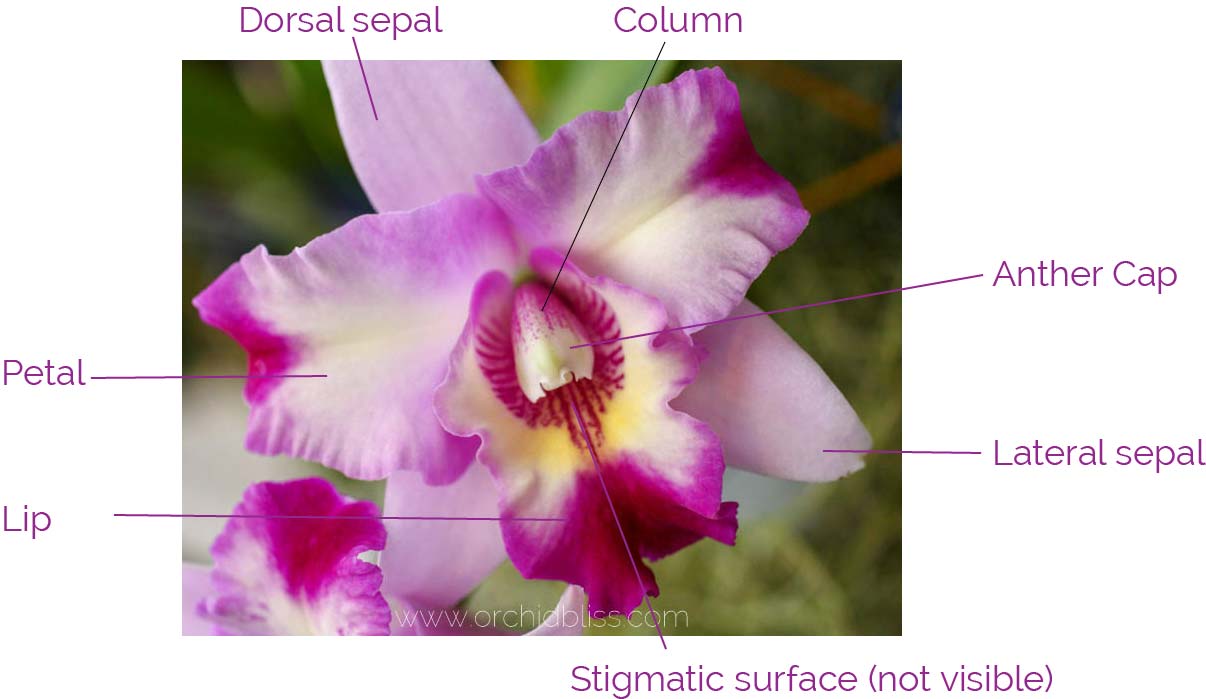
The orchid has three sepals, one dorsal sepal at the top and two lateral sepals one on each side. Three petals, one on each side and the lower lip, also called the labellum. The column and anther cap are the reproductive area of the flower.
Orchid Terminology
Aerial Roots
Aerial roots are roots that do not grow down into potting media, but rather, grow out into the air. These roots are specifically designed to grow in air and should not be potted or worse, cut off.
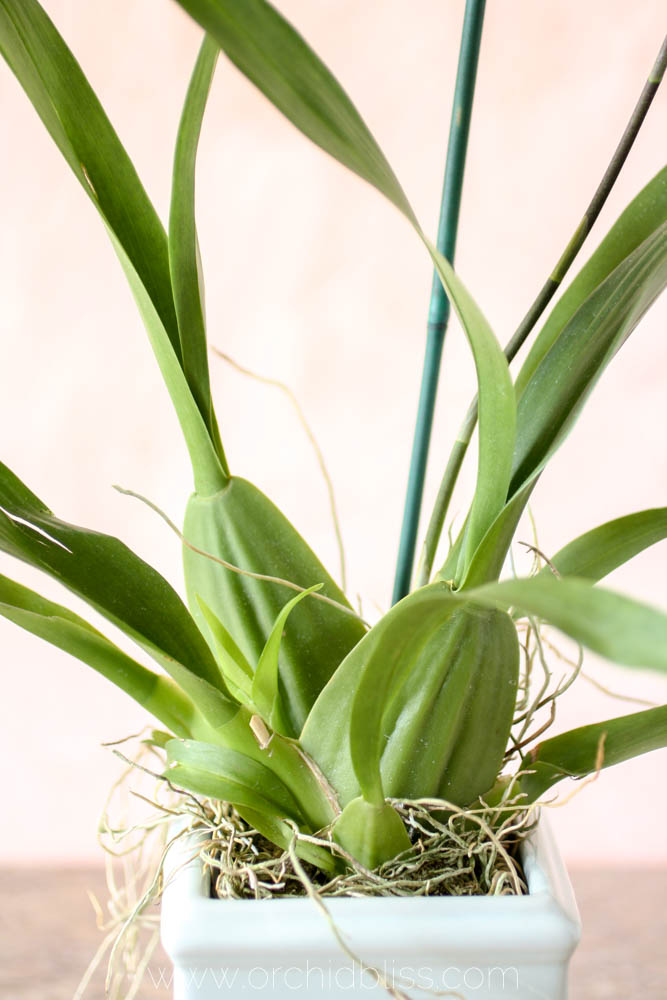
Aerial roots grow in the air, as opposed to down in the potting mix. Resist the temptation to trim away aerial roots as they absorb water and assist the orchid in photosynthesis.
Bilateral Symmetry
Have you ever felt like your orchid was looking at you? Perhaps it’s because they look like our faces–well, sort of. Our faces and orchid flowers are both bilaterally symmetrical. This means that if you divide our face, and orchid’s face, in half, from top to bottom, one side would mirror the other. Most other flowers have radial symmetry, the faces of these flowers can be sliced in any direction and still mirror each other.
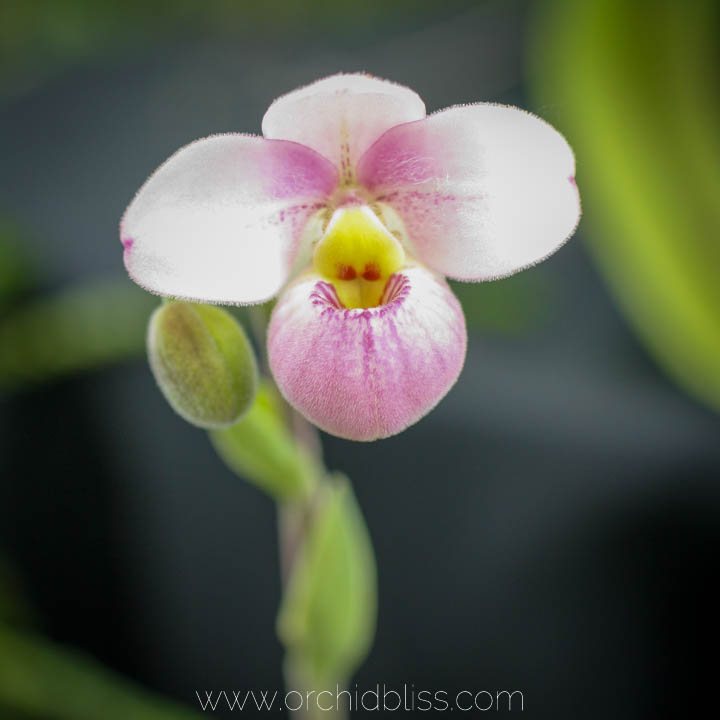
Doesn’t it almost seem like this orchid can see you?
Bud Blast
If you’ve had seemingly healthy bud wither up and die for no apparent reason you have first-hand experience with bud blast. Though deeply disappointing, bud blast can be avoided once you know its causes. Bud blast is the result of drastic environmental changes. Changes in temperature and watering fluctuations common causes of bud blast. Pollution also causes bud blast.
To decrease the chances that your orchid experiences bud blast, keep your orchid away from heating and cooling vents, drafts from a frequently used exterior door and riding in the trunk of the car. If you grow your orchids in one room of your house and then bring them out to the main living space when they are in bloom, it is a good idea to let all the flowers open before moving the orchid.
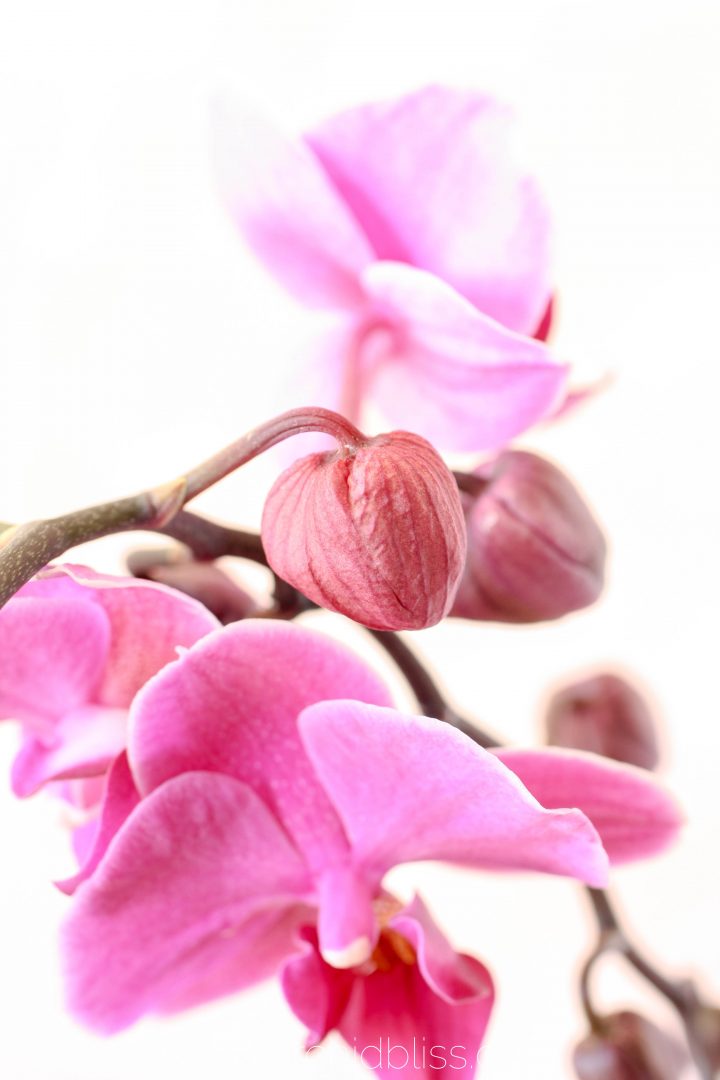
When seemingly healthy buds wither and die without blooming it’s called bud blast. It’s caused by environmental changes like temperature and water fluctuation. The good news is that it’s preventable.
Epiphyte
An epiphyte is a plant that grows on another plant, but does not gain nutrients from the host plant. Many orchids grow up the the tree canopy of host plants absorbing water and nutrients from rainfall and debris. Orchids roots wrap around the host plant securing them to the tree.
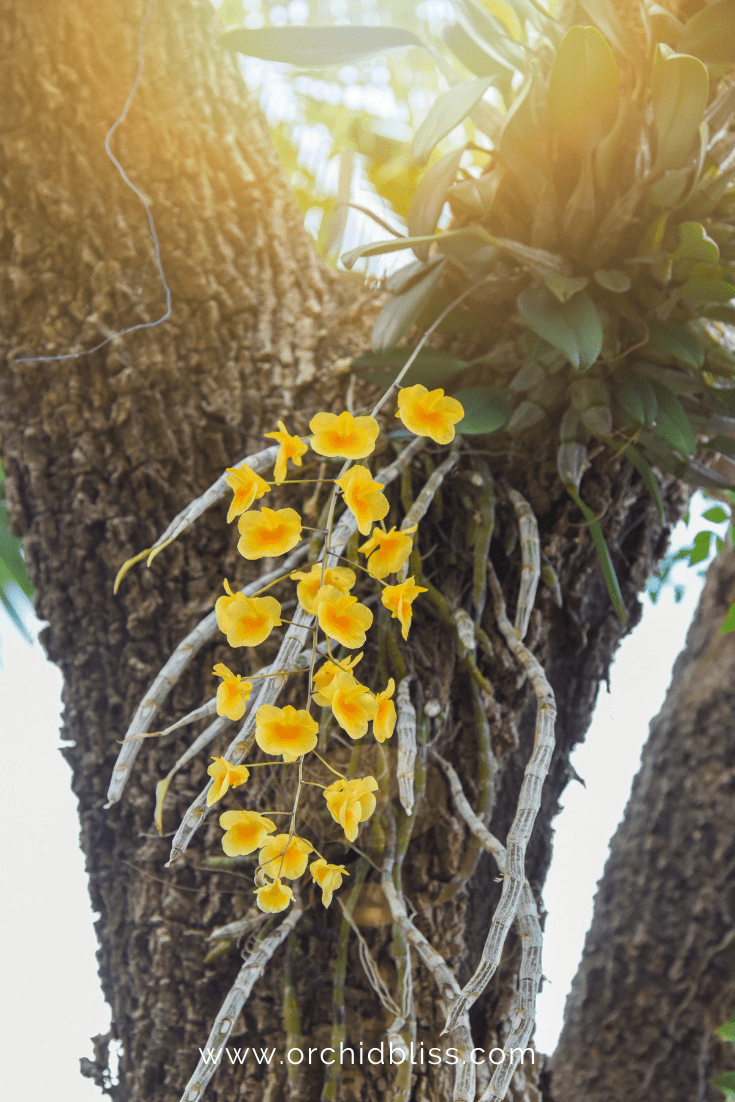
Orchid roots can be quite tenacious as they wrap around their host plant. Understanding that many orchids absorb rainwater and take in nutrients without the soil explains why orchids require high-quality water and quick draining potting media.
Inflorescence
The inflorescence of the orchid includes more than just the flower. Inflorescence includes the full flower stalk and all the flowers and buds growing on the stalk.
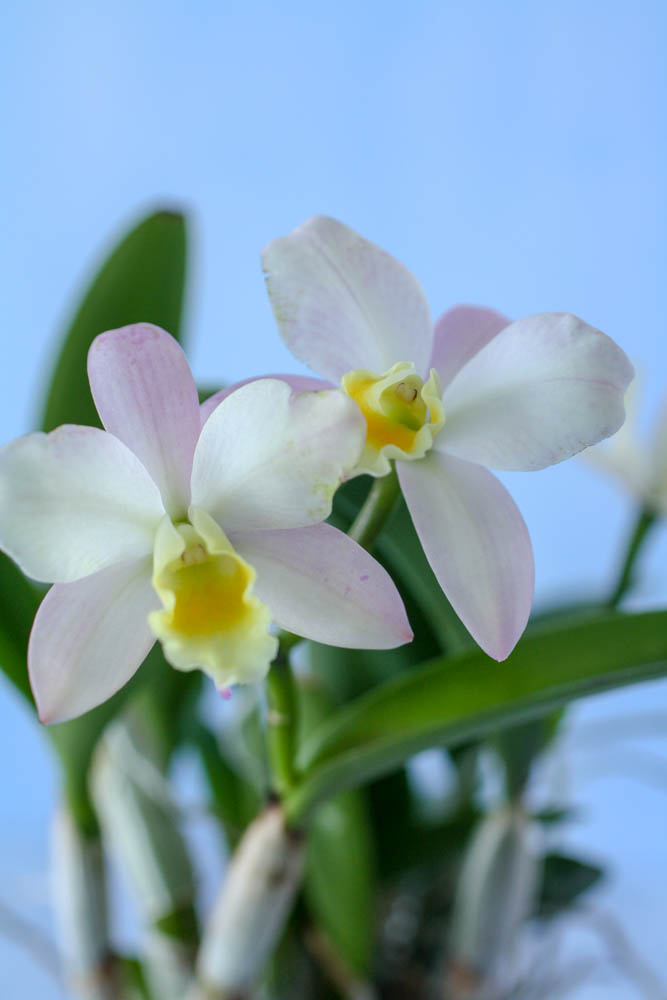
The inflorescence includes the whole flower spike or stems where the flowers emerge. After flowering, the flower stalk is cut to help prepare the orchid to bloom again.
Keiki
Keiki means baby in Hawaiian and refers to a plantlet growing off the mother orchid. A keiki is an exact clone of the mother plant. If the keiki grows its own roots, the keiki may be removed when the roots are several inches long and potted up.
If the keiki does not have its own roots it is called a basal keiki. Basal keikis grow at the base of the orchid. As a basal keiki does not have its own root system it is dependent on the mother plant for its nutrients and should not be separated from the mother plant.
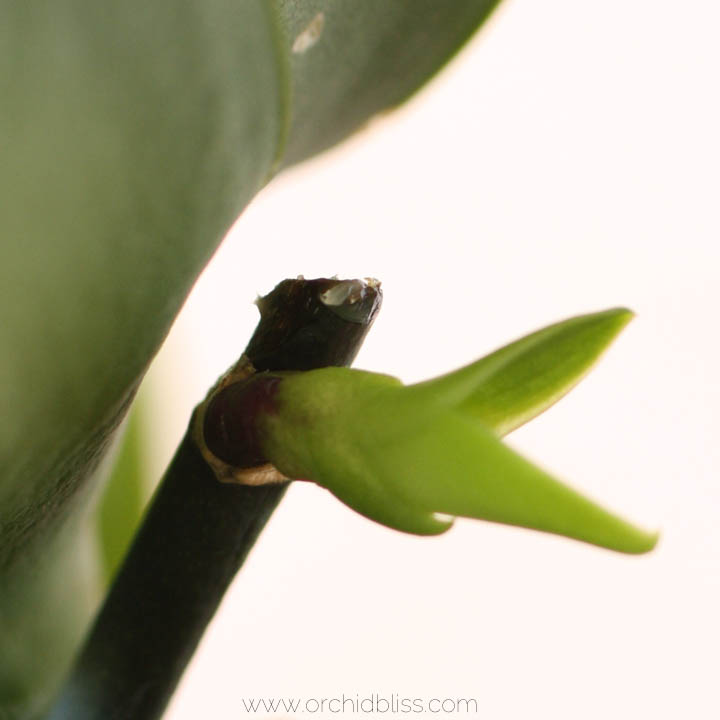
Keiki means baby in Hawaiian and refers to a new orchid growing from the mother orchid. When the roots and leaves are a few inches long, they can be separated from the mother plant.
Kokedama
Kokedama means moss ball in Japanese and is a Japanese form of growing plants. Wrap the roots in sphagnum moss to grow your own orchids kokedama style. I have had a lot of success and fun growing Phalaenopsis orchids this way.
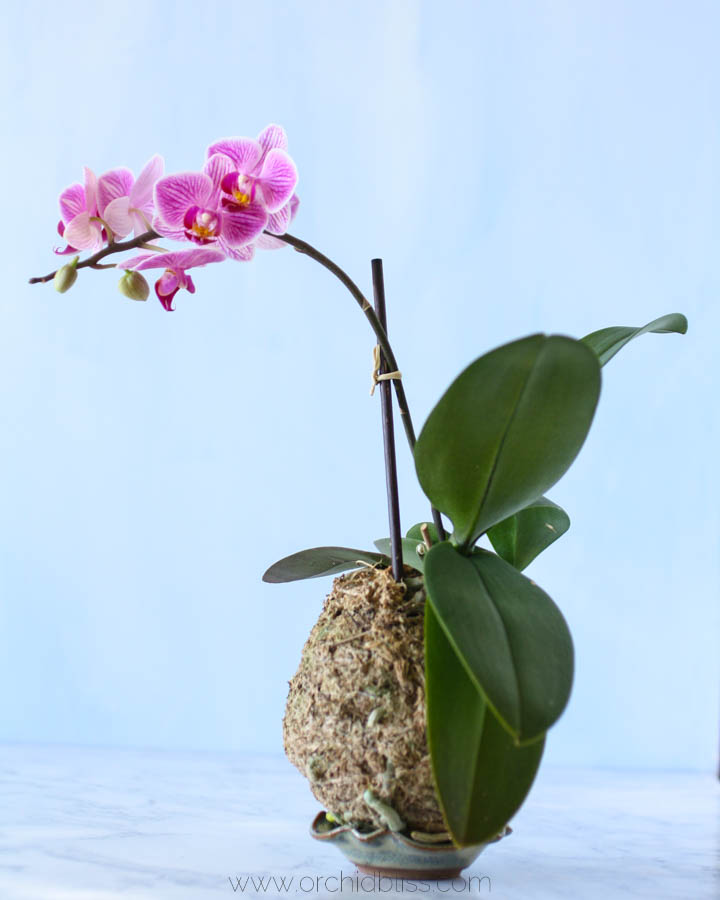
For a tutorial that will walk you through potting your own orchid kokedama style, click here.
Monopodial
Phalaenopsis and vanda orchids are both examples of monopodial orchids. Monopodial orchids grow from a single stem and not along a rhizome. These orchids do not have water storage in the form of pseudobulbs.
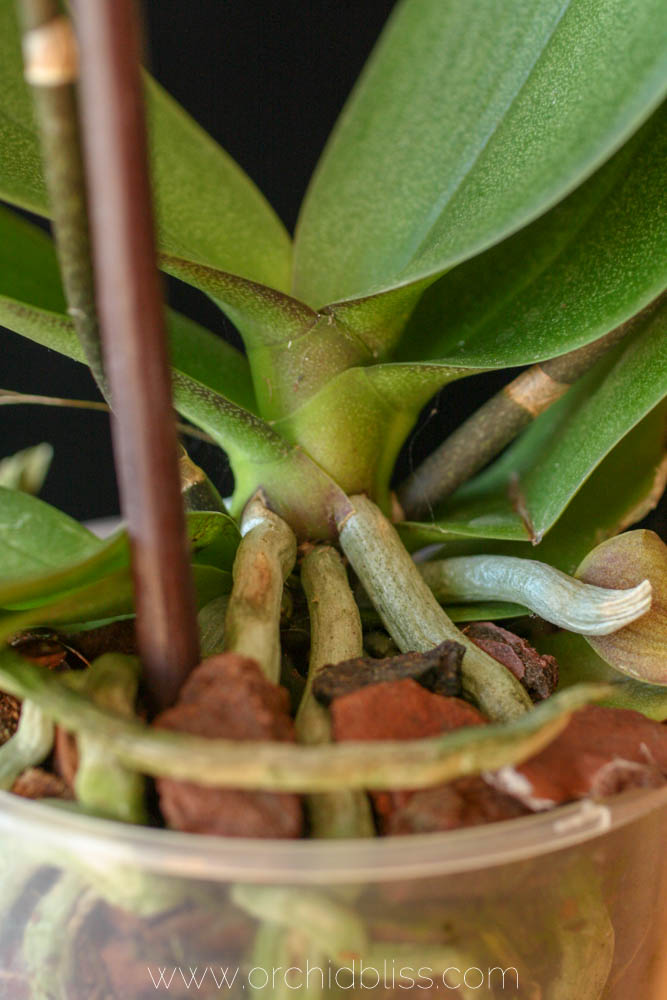
Monopodial orchids such as a Phalaenopsis or a Vanda have a single vertical stem. Leaves grow out of the stem and roots emerge from the base of lower leaves. Flower stalks grow from the base of new leaves.
Orchid Seed Capsule
Orchids seeds are a fascinating subject and were a puzzle for many years as scientists struggled to discover how to grow orchids by seeds. Eventually, scientists learned that orchid seeds need certain types of fungi to infect the seeds. The orchid seeds are then able to draw nutrients from the fungi and the seed will begin to swell and grow.
Orchid seeds are so extremely small that one seed capsule can contain tens of thousands of minuscule seeds. If a seed lands in a hospitable growing area, complete with the right fungus, the seed may mature and grow.
In nature, it can take several years for the seed to grow a root system substantial enough to become a seedling and poke up through its protective covering (moss, etc).
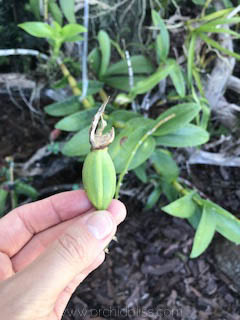
Thank you, Karina for submitting this photo of your orchid seed capsule.
Sheath
Sheaths are a papery layer that covers pseudobulbs. Sometimes pests, such as scale, like to hide in sheaths. To dress up your orchid for display, or to check for bugs, carefully remove the sheaths.
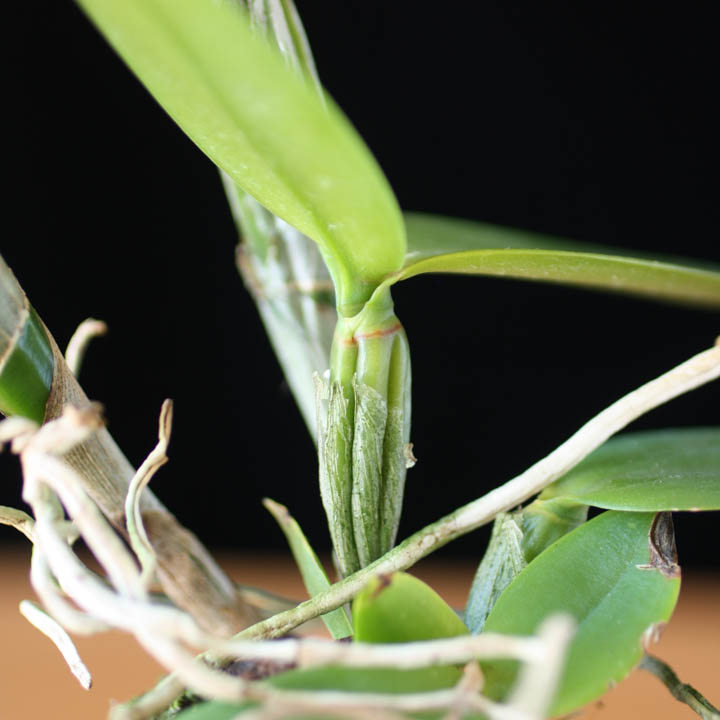
A sheath is a papery tissue that covers a pseudobulb as on this Cattleya.
Stomata
Stomata are pores on the orchids’ leaves that allow them to absorb carbon dioxide and expel oxygen. When stomata open water escapes out through the pores. To keep the orchid from dehydrating, water in the air, humidity makes up the difference. When there is not enough humidity, the stomata close and the orchid does not absorb the carbon dioxide it needs.
Sympodial
Most orchids are sympodial, meaning that they grow along a rhizome and have pseudobulbs. You can learn a lot about an orchid by its pseudobulbs. The newest pseudobulb is called the lead bulb and should be plump, stiff and larger than older pseudobulbs. When the orchid reaches maturity, the pseudobulb will be the same size as the previous year’s bulbs. Older bulbs are called back bulbs.
Sympodial orchids are a good investment if you want to grow your orchid collection. Sympodial orchids can be divided when potting. Just be sure that each division has about 4-5 pseudobulbs.
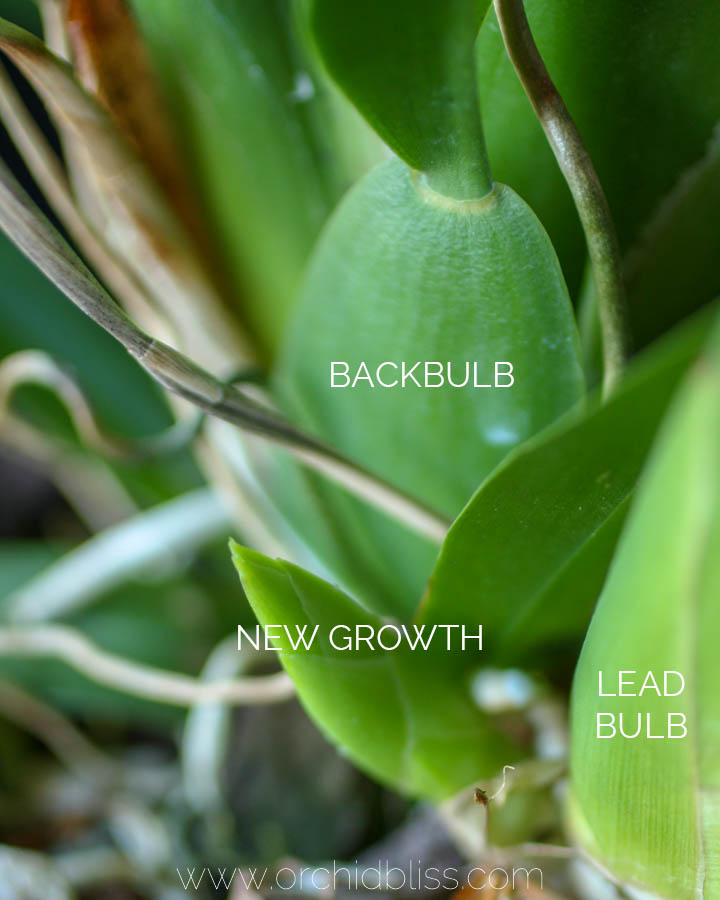
Sympodial orchids grow from a horizontal rhizome off of which grow pseudobulbs. Backbulbs refer to older pseudobulbs, while lead bulbs are new pseudobulbs from which new growth appears. New growth is where new pseudobulbs and flower stalks will form. Although backbulbs may not produce flowers, they still perform an important function for the orchid: water storage.
Transpiration
Transpiration is the rate of water loss when leaves open their stomata (pores) to absorb carbon dioxide and expel oxygen. If transpiration rates are too low the orchid stops breathing.
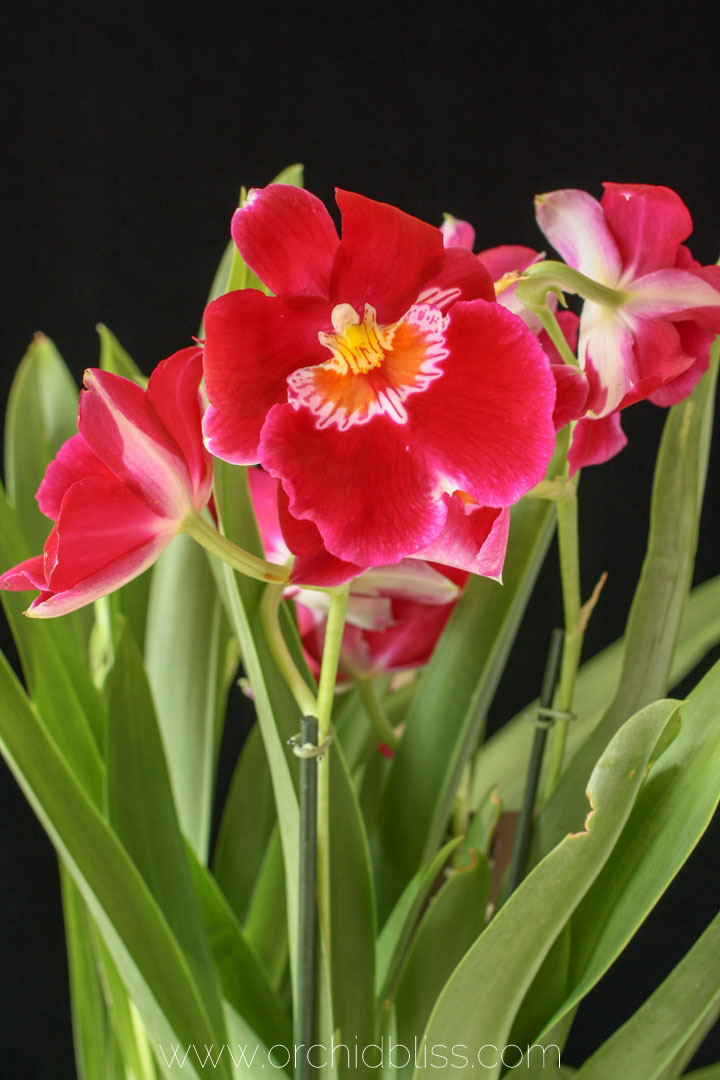
Adequate humidity is essential for a well-hydrated orchid. Transpiration is the rate of water loss when leaves open their stomata (pores) to absorb carbon dioxide and expel oxygen.
To successfully grow orchids indoors, there’s nothing like a humidifier to grow healthy orchids. To prevent damage to your home, keep humidity around 40-50%. To prevent damage to your home, I recommend using a humidistat. Within this 40-50% maximum humidity range there are many orchids that will do very well.
For growing orchids indoors, look for orchids such as:
- Australian Dendrobiums
- Brazilian rupicolous Laelias
- Catasetum
- Cattleya
- Oncidium
- Phalaenopsis
Unless you can provide a high humid environment, avoid growing indoors high humidity orchids such as:
- Draculas
- Masdevallias
Velamen
Velamen is a sponge-like tissue that absorbs water and nutrients and covers orchid roots. Velamen only absorbs water – it doesn’t release it – that’s why it’s important not to overwater your orchids.
Velamen is stiff and firm when healthy, but turns limp if it gets too much water. If the orchid is underwatered the velamen turns brown and brittle.
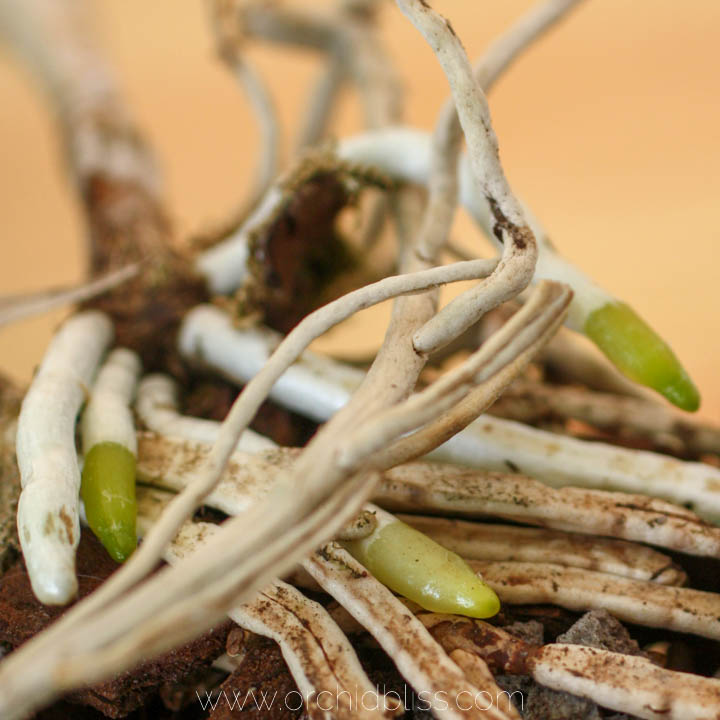
Velamen acts as a sponge, absorbing water and nutrients. It covers orchid roots just behind the green tips and absorbs water and nutrients. The green tips of this Cattleya orchid indicate a healthy, actively growing orchid.
I’m Here to Help
If you ever come across an unfamiliar word or phrase when learning more about caring for orchids, don’t hesitate to leave a comment below. This archive of orchid anatomy and terminology is a work in progress.
To help you further, start by downloading my free cheat sheet to see where to cut the orchid flower spike after blooms have faded to trigger re-blooming. Click here, for the cheat sheet. It’ll be super helpful.

